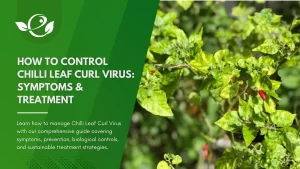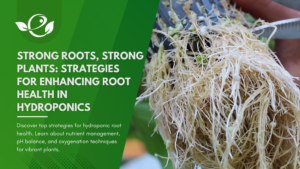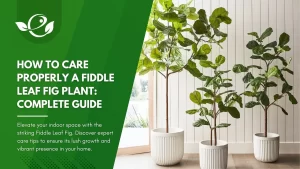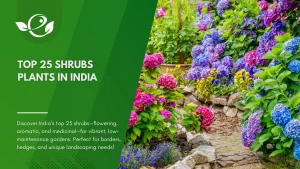Table of Contents
Gardening is all about balancing aesthetics, practicality, and sustainability. Creeping thyme fits the bill perfectly. Creeping thyme is a charming, versatile ground cover with both ornamental and culinary appeal. This herb has quickly become a favourite among gardeners with its delicate foliage, aromatic leaves, and vibrant blooms. It not only enhances your outdoor space with its lush, low-growing habit but also offers benefits like drought tolerance and minimal upkeep. Whether you’re a seasoned gardener or just starting out, this guide provides step-by-step instructions and expert insights on growing and caring for creeping thyme.
Understanding Creeping Thyme
What Is Creeping Thyme?
Creeping thyme (Thymus serpyllum) is a perennial herb known for its sprawling growth habit and small, bright flowers that can range from purple to pink. Originating from the Mediterranean, it’s particularly well-suited to warm, sunny climates, though it adapts well to a variety of garden conditions.
Key Benefits:
- Versatile Ground Cover
- Culinary Uses
- Low Maintenance
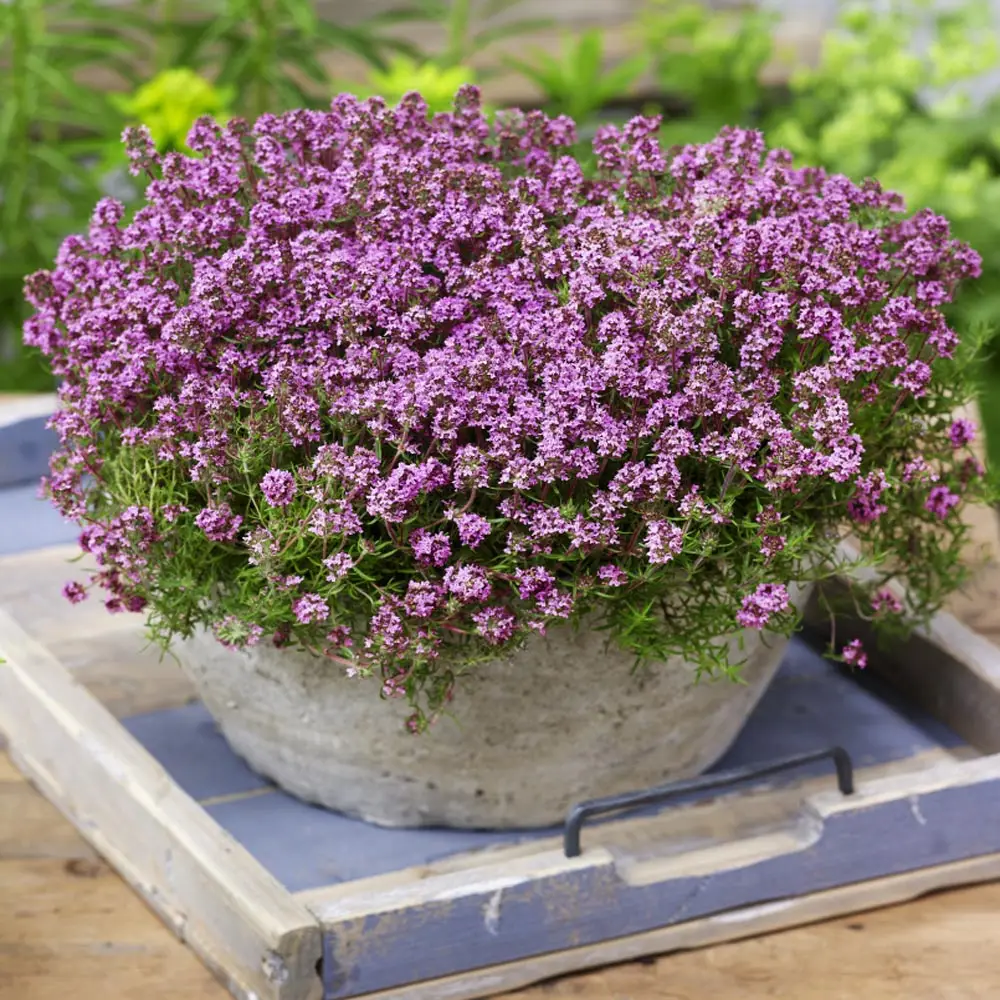
| Characteristic | Details |
|---|---|
| Common Name | Creeping Thyme |
| Botanical Name | Thymus serpyllum |
| Plant Type | Evergreen perennial ground cover; herb |
| Mature Size | 2-6 in. tall, 6-18 in. wide |
| Hardiness Zones | USDA Zones 4-9 |
| Sun Exposure | Full sun |
| Soil Requirements | Well-drained, sandy to loamy soils |
| Soil pH | Neutral, alkaline |
| Growth Habit | Low-growing, spreading; ideal for ground cover and edging |
| Additional Features | Drought tolerant; aromatic leaves; edible; attracts pollinators |
| Native Area | Europe |
Benefits of Growing Creeping Thyme
- Low Maintenance: Creeping thyme thrives with minimal care and water once established, making it an excellent choice for busy or novice gardeners.
- Drought Tolerance: Its natural resilience makes creeping thyme ideal for dry climates and water-conscious gardening practices, reducing the need for frequent watering.
- Versatile Ground Cover: With its low-growing, spreading habit, creeping thyme is perfect for filling in gaps, edging walkways, and even as a sustainable alternative to traditional lawns.
- Ornamental Appeal: The delicate foliage and vibrant blooms enhance garden aesthetics, adding visual interest and texture throughout the growing season.
- Culinary Uses: The herb is not just decorative; its aromatic leaves can be used to flavor a variety of dishes, elevating your culinary creations.
- Pollinator Friendly: It’s small, nectar-rich flowers attract bees and butterflies, helping to support local ecosystems and promote biodiversity.
- Sustainable Gardening: With its natural ability to suppress weeds and thrive in well-drained soils, creeping thyme contributes to an eco-friendly, low-input garden environment.
- Deer-resistant: creeping thyme is generally considered to be deer-resistant, meaning deer are less likely to browse or eat it compared to other plants.
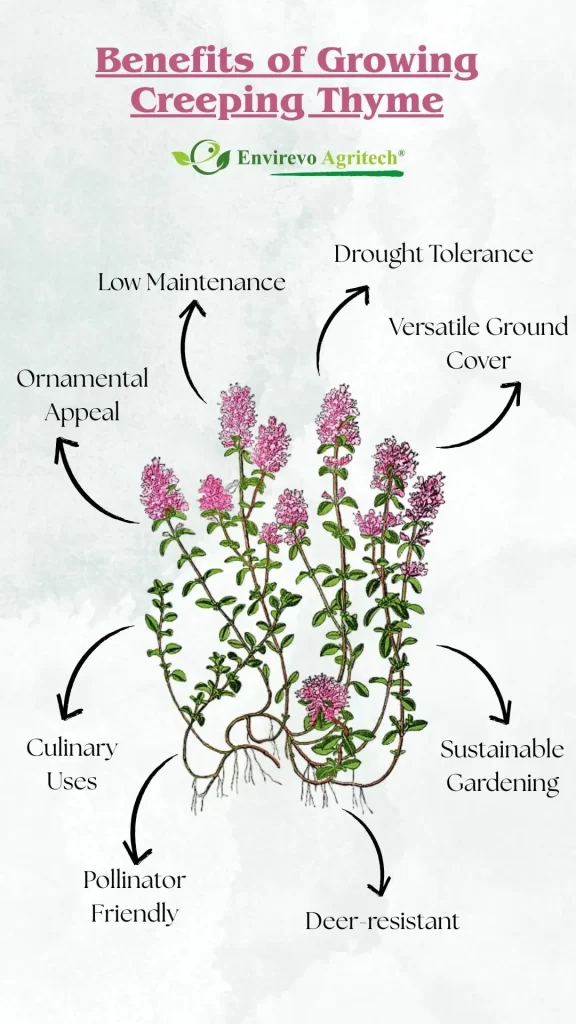
Creeping Thyme varieties
- Thymus serpyllum ‘Elfin’: A diminutive variety characterized by its ultra-small, dense growth habit. Ideal For Rock gardens, narrow spaces, and as a decorative ground cover between pavers. Its compact nature makes it perfect for adding texture without overwhelming the space.
- Thymus serpyllum ‘Coccineus’: Known for its vibrant pink to purple blooms, this variety brings an eye-catching burst of color to the landscape. Ideal For Garden beds and edging, where its colorful display enhances visual appeal while providing the benefits of a hardy ground cover.
- Thymus praecox ‘Doone Valley’: Distinguished by its vigorous growth and resilience in hot, dry climates, this cultivar is bred for robustness. Ideal For Areas requiring low-maintenance ground cover that can tolerate heat and minimal water. Its resilient nature makes it an excellent option for xeriscaping.
- Golden Creeping Thyme: This variety features a lighter, yellowish-green hue in its foliage, offering a warm contrast to traditional green-ground covers. Ideal For Integrating into mixed plantings or as an accent along pathways; its distinctive color can brighten otherwise monotonous areas.
- Wild Thyme (Mother of Thyme): Often referred to as wild or mother thyme, this naturally occurring form exhibits a slightly looser growth habit with a mix of delicate flowers and aromatic leaves. Ideal For Naturalized garden settings where a more organic, less manicured look is desired. It also benefits wildlife by attracting pollinators.
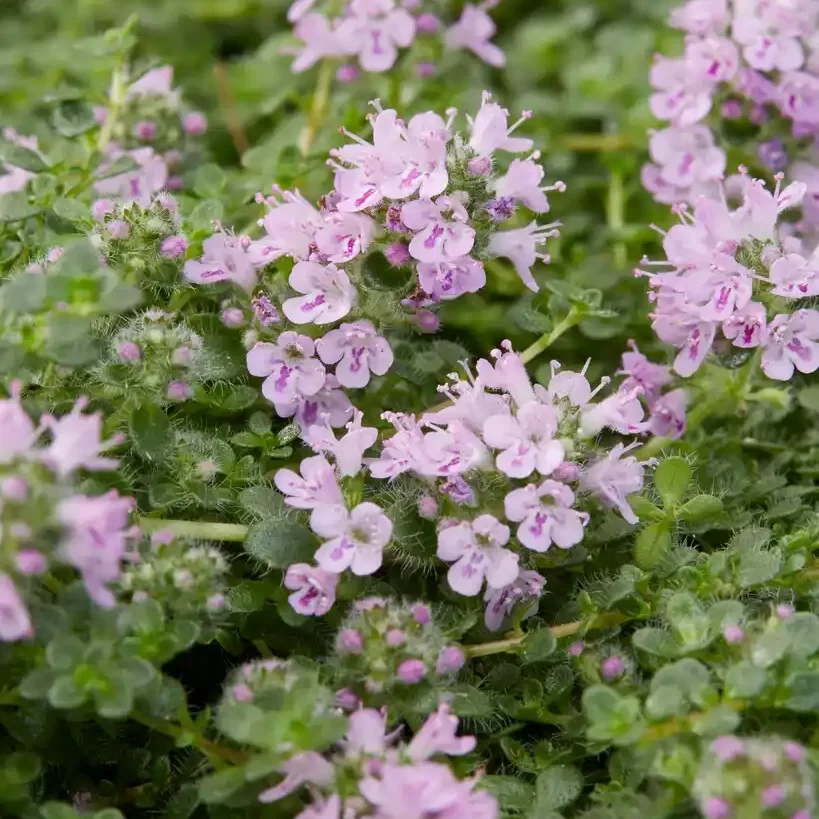
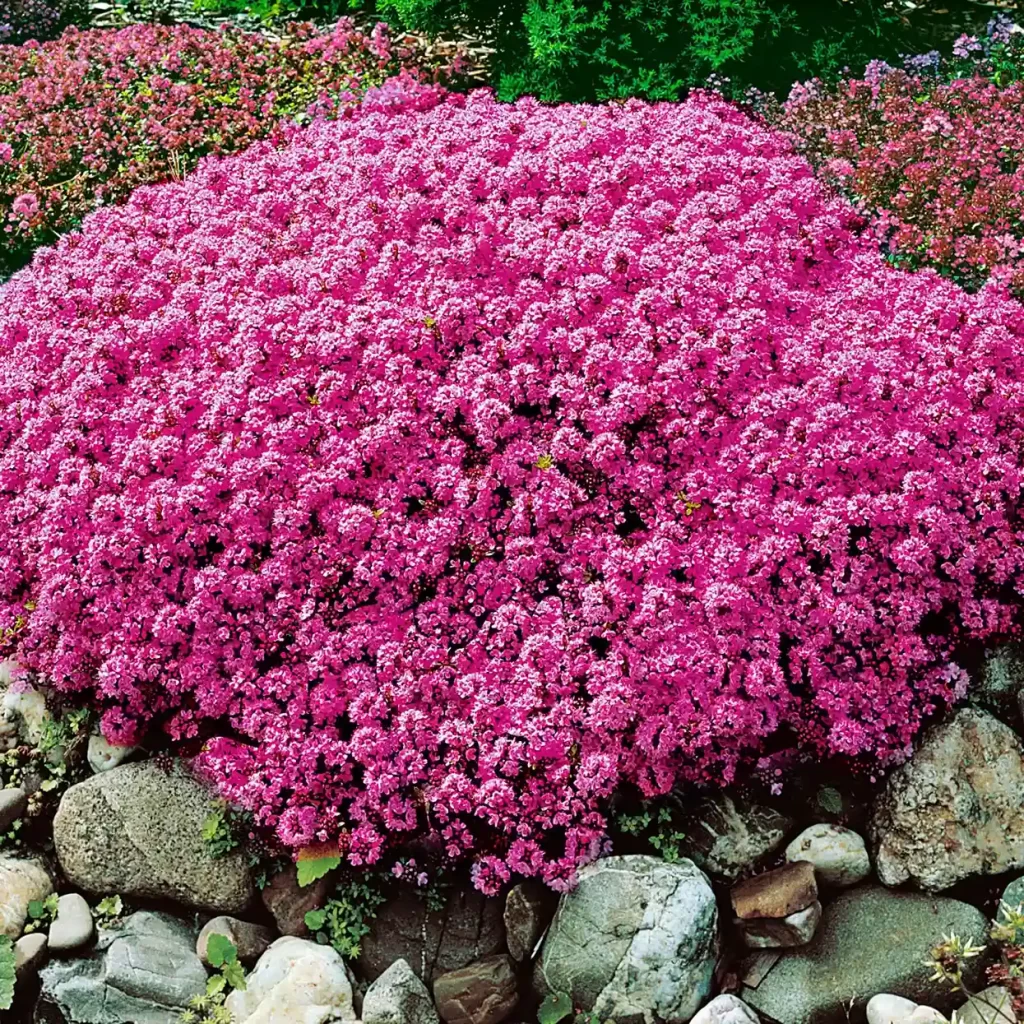

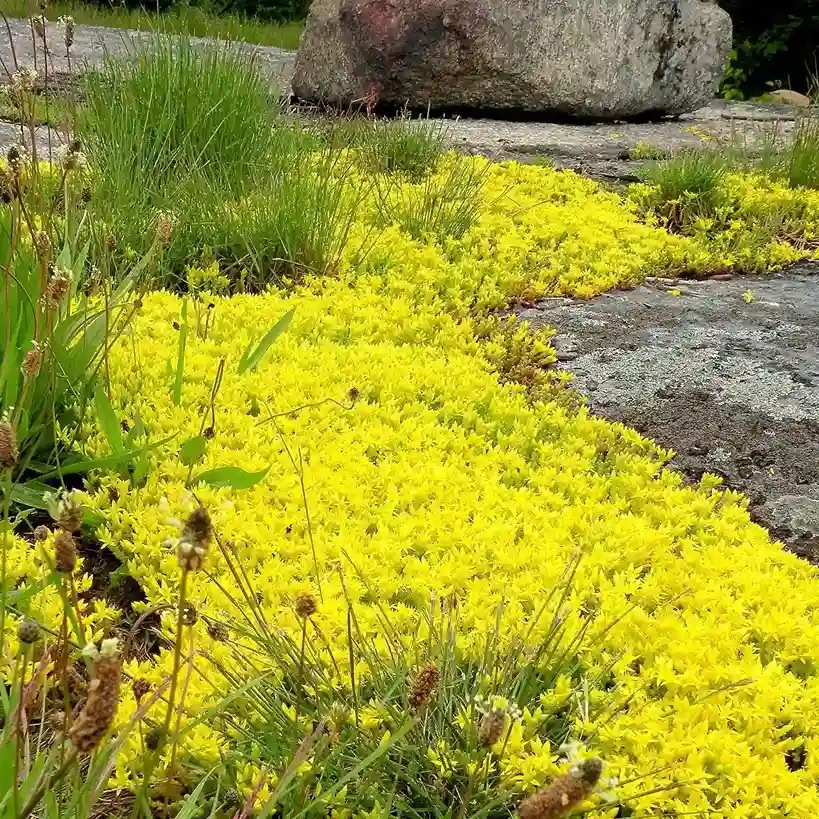
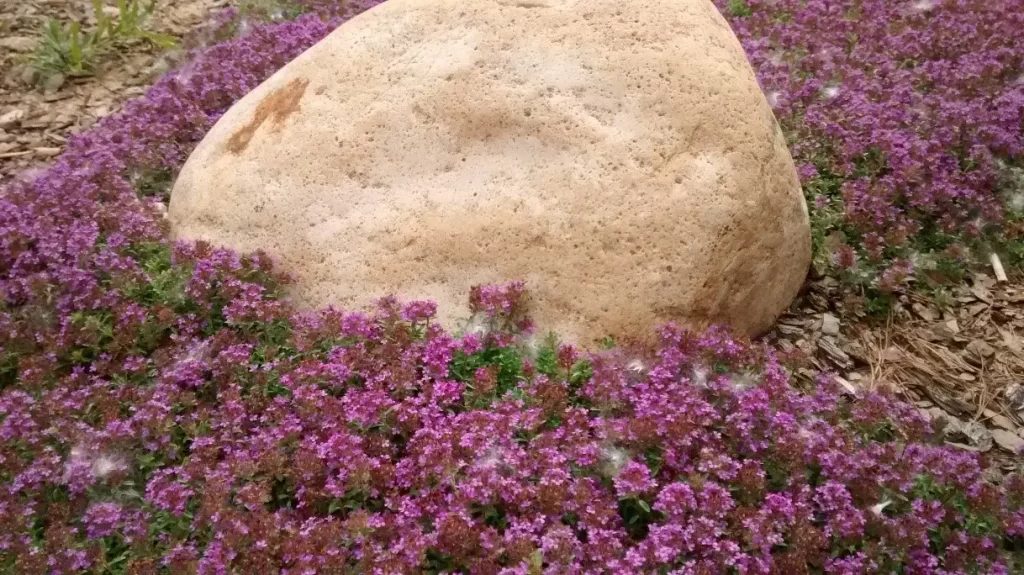
How to Grow Creeping Thyme
Creeping thyme is a resilient, versatile herb perfect for ground cover as well as a decorative addition to gardens and containers. Growing creeping thyme can be accomplished by following a few key steps to ensure optimal germination, growth, and maintenance. In this section, we delve into traditional planting methods alongside two specialized techniques: growing from seed and container cultivation.
Traditional Planting & Maintenance
- Site Selection: Choose a location that receives full sun—ideally 6 to 8 hours per day—and offers well-drained soil. Creeping thyme thrives in areas that mimic its native Mediterranean environment.
- Soil Preparation: Loosen the soil and amend it with organic matter such as compost. A slightly alkaline to neutral pH is preferred. Enhancing the soil with a bit of sand can further improve drainage, ensuring the roots do not stagnate in overly moist conditions.
- Transplanting Young Plants: Start with healthy young plants or divisions. When transplanting, space them about 6 to 12 inches apart to allow ample room for their spreading growth habit. Water thoroughly after planting to settle the soil around the roots.
- Routine Maintenance: Once established, creeping thyme requires minimal maintenance. Light pruning after flowering encourages denser growth and helps maintain its shape. The plant’s natural drought tolerance means it will need little supplemental watering beyond the initial establishment period.
Growing From Seed
- Seed Selection and Preparation:
- Quality Seeds: Start with high-quality seeds from a reputable supplier to ensure strong germination rates.
- Pre-Soaking: Some gardeners recommend lightly soaking seeds in water for 12–24 hours to soften the seed coat, which can promote more uniform germination.
- Sowing Technique:
- Indoor Sowing: Begin the seed sowing process indoors about 6-8 weeks before the final frost date in your region. Use a seed tray or small pots filled with a well-draining seed starting mix.
- Surface Sowing: Lightly press the seeds into the soil surface; avoid covering them with too much soil as creeping thyme seeds require light to germinate.
- Germination Conditions: Place the tray in a warm, bright area with a stable temperature around 65–70°F (18–21°C). Maintain moderate moisture levels, ensuring the soil remains damp but not waterlogged.
- Transplanting Outdoors: Once seedlings have developed a few sets of true leaves and the risk of frost has passed, harden them off gradually by exposing them to outdoor conditions. Transplant the seedlings into their final location or into prepared garden beds, spacing them adequately to support their spreading habit.
- Challenges and Tips: Germination can be slow and sporadic with creeping thyme seeds; therefore, using a seed tray with controlled conditions can enhance success. Monitor for damping-off, a common fungal issue in seed-starting environments, and adjust watering practices if necessary.
Growing in Pots
- Container Selection:
- Size & Material: Choose a pot that is at least 12 inches in diameter to allow room for the plant to spread. Containers made of terracotta or clay work well, as they are porous and help regulate moisture levels.
- Drainage: Ensure the container has ample drainage holes. Adding a layer of gravel or broken pottery at the bottom of the pot can further improve drainage and prevent water from pooling around the roots.
- Soil Mix: Use a lightweight, well-draining soil mix that mimics the natural growing conditions of creeping thyme. A mix incorporating potting soil, perlite, and a small amount of sand works best. If available, add a bit of compost to slowly release nutrients and foster robust growth without encouraging overly lush, dense foliage.
- Planting in Pots:
- When planting creeping thyme in a container, gently spread out the roots and position the plant so that its crown is at the soil surface.
- After planting, water lightly to settle the soil without causing compaction.
- Care and Watering:
- Container-grown creeping thyme may require more frequent watering than garden-planted specimens, especially during hot summer months. Monitor the soil moisture regularly, keeping in mind that creeping thyme prefers a drier soil once established.
- Fertilization should be minimal; if needed, apply a diluted, balanced liquid fertilizer during the active growing season to support steady, slow growth.
- Environmental Considerations: To ensure healthy growth, place your container in a location that receives full sunlight for at least 6 hours daily. Be mindful of temperature fluctuations in containers, as they can heat up or cool down more rapidly than garden soil.
How to Care for Creeping Thyme
Soil
Creeping thyme thrives in soils that drain well. This herb is naturally adapted to rocky, sandy, or loamy soils where water does not pool. In compacted or heavy clay soils, you may need to amend the planting area with organic matter or coarse sand to improve drainage and prevent root rot. A loose, friable soil texture is ideal. In a well-prepared bed, the plant’s roots can spread easily, which is key to establishing a dense mat that effectively suppresses weeds. If you’re planting in a location with heavy soil, consider raised beds or mounded areas to improve aeration and drainage.
Light
Creeping thyme is a sun-loving plant that requires at least six hours of direct sunlight per day to flourish. Ample sunlight not only promotes compact growth but also enhances the plant’s aromatic qualities and encourages a more prolific flowering period. More sunlight leads to more blooms, which are not just visually attractive but also serve to intensify the herb’s aroma.
Water
Creeping thyme is notably drought tolerant. Overwatering can be more harmful than a bit of drought. During the first few weeks after planting, water regularly to help the plant establish. Once established, reduce the watering frequency. Use a drip irrigation system or soaker hose to provide a slow, steady supply of moisture, avoiding overhead sprinklers that may encourage fungal growth.
Fertilization and Nutrient Management
- Light Feeding: Creeping thyme has modest nutrient requirements. Incorporate a slow-release organic fertilizer during planting.
- Seasonal Adjustments: In the early growing season, a light feeding can boost growth, but avoid heavy fertilization, which may lead to overly vigorous growth that can reduce the plant’s density.
Pruning and Maintenance Techniques
- Routine Trimming: Light pruning after the flowering period will help maintain its compact form and stimulate new growth.
- Shape Control: Remove any errant growth to prevent it from encroaching on other garden areas. This trimming also keeps the plant healthy and encourages a denser appearance.
Common Pests & Diseases
| Pest/Disease | Common Cause | Signs to Look For |
|---|---|---|
| Aphids | Infestations often occur when plants are stressed or weakened, attracting these tiny sap-sucking insects. | Tiny, pear-shaped insects clustered on new growth; sticky residue (honeydew) on foliage; curled or distorted leaves. |
| Powdery Mildew | High humidity with poor air circulation and excessive moisture on leaves, particularly in overwatered plants. | White, powdery spots appearing on leaves and stems; leaves may turn yellow or become deformed. |
| Botrytis (Gray Mold) | Cool, damp conditions combined with high humidity and dense growth can promote fungal infection. | Brown, water-soaked spots on leaves and stems; fuzzy or gray mold-like covering may develop on affected areas. |
| Damping-Off/Root Rot | Overwatering or poorly drained soil can create conditions favorable to soilborne fungal pathogens. | Soft, mushy stem bases; wilting or yellowing foliage; plants may suddenly collapse or die shortly after emergence. |
| Spider Mites | Warm, dry conditions often lead to a rapid increase in spider mite populations on stressed plants. | Fine webbing visible on foliage; leaves may show speckling, stippling, or become dusty in appearance; progressive leaf drop in severe cases. |
Troubleshooting Common Problems With Creeping Thyme
Woody Stems
Creeping thyme is typically prized for its soft, low-growing habit, but woody stems can develop when older parts of the plant are not pruned or when the plant experiences stress. Woody stems may form as a natural aging process; however, premature woodiness can also be attributed to environmental stresses such as prolonged drought or overexposure to sun, which encourages the plant to harden its stems for protection. Maintaining moderate moisture can prevent unnecessary stress that causes the plant to “harden up” too early.
Drooping Stems
When stems begin to droop and the leaves show signs of yellowing, it can indicate that creeping thyme is under stress. This condition often results from overwatering or poor drainage, which can lead to root rot and reduced nutrient uptake. Additionally, excessive fertilizer application can burn the roots, also resulting in yellowing and drooping. Ensure the planting site offers excellent drainage. In heavy soils, adding sand or organic matter can help improve drainage and prevent water from sitting around the roots.Allow the soil to dry out between waterings, especially if the plant is newly established. Consider using a drip irrigation system to deliver a slow, steady amount of water.
Browning Leaves
Browning or scorched leaves in creeping thyme can be caused by several factors. Common causes include excessive sunlight exposure (particularly if the plant has not yet acclimated to full sun), environmental stresses like wind or intense heat, or water-related issues, such as drought or inconsistent watering.
Plants Drying Out
Creeping thyme’s natural drought tolerance means it can usually endure periods of dry weather; however, newly established or stressed plants may dry out before they are fully rooted. This condition is typically exacerbated by infrequent watering, excessive heat, or winds that rapidly reduce soil moisture. For new plantings, maintain a more consistent watering schedule until the roots are well-established. Applying a thin layer of mulch (keeping it a few inches away from the plant’s base) helps retain soil moisture and mitigates the drying effects of heat and wind.
Nutrient Deficiencies
Though creeping thyme has modest nutrient requirements, deficiencies can occur, especially in poor soil conditions. Signs of nutrient deficiency may include pale or weak foliage, reduced growth, or an overall lack of vigor in the plant. Specific deficiencies, such as nitrogen or potassium shortage, might manifest as general discoloration or decreased resilience.
Propagating Creeping Thyme
Creeping thyme can be propagated through several methods: division, stem cuttings, and seeds. Each approach has its own set of steps and considerations:
- Division: This is the most straightforward method and is best performed in early spring or early autumn. Begin by carefully digging up an established creeping thyme plant, ensuring you capture a substantial portion of its root system. Gently separate the plant into smaller sections, making sure each division has a healthy amount of roots and foliage. Replant these divisions immediately into well-draining soil, spacing them about 6 to 12 inches apart to allow for spreading. Water the newly planted divisions thoroughly to help them establish.
- Stem Cuttings: This method is typically undertaken in mid to late summer. Select healthy, non-flowering stems from the current year’s growth that are just beginning to harden. Cut segments approximately 2 to 4 inches long. Remove the leaves from the lower half of each cutting to expose the nodes. Plant these cuttings in a container filled with a well-draining, gritty compost mix. To maintain humidity, cover the container with a clear plastic bag or place it in a propagator. Position the container in a warm, bright location but out of direct sunlight. After a few weeks, once roots have developed, the cuttings can be transplanted into the garden.
- Seeds: While propagating creeping thyme from seeds is less common due to variable germination rates, it is possible. Sow seeds indoors in late winter or early spring. Use a seed-starting tray filled with a light, well-draining seed compost. Sprinkle the seeds on the surface of the soil and lightly press them in without covering, as they require light to germinate. Keep the soil consistently moist and maintain a temperature of around 55°F (13°C). Germination typically occurs within two to three weeks. Once the seedlings have developed several true leaves and are sturdy enough to handle, they can be transplanted into individual pots to grow on before being planted out after the risk of frost has passed.
Potting and Repotting Creeping Thyme
Select a container with ample drainage holes to prevent water accumulation, as creeping thyme is susceptible to root rot in waterlogged conditions. Terracotta or clay pots are ideal due to their porous nature, which allows for better air circulation and moisture regulation. Use a well-draining potting mix, preferably one designed for herbs or succulents, to ensure the roots remain healthy. When planting, position the thyme so that the top of the root ball is level with the soil surface, and water thoroughly after planting to settle the soil around the roots.
Over time, creeping thyme may outgrow its container or deplete the soil’s nutrients, necessitating repotting. The optimal time to repot is in the spring, aligning with the plant’s active growth phase. Choose a new pot that is 2 to 4 inches larger in diameter than the current one to provide adequate space for root expansion. Gently remove the plant from its existing pot, taking care not to damage the roots.
Inspect the root ball for any signs of disease or rot, trimming away any affected areas with sterilized scissors. Place the plant in the new container, filling around it with fresh, well-draining potting mix. Water lightly to help the plant settle into its new environment. After repotting, position the container in a location that receives full sun, as creeping thyme flourishes with at least six hours of direct sunlight daily.
Creative Uses for Creeping Thyme in Landscape Design
- Pathways and Stepping Stones: Use creeping thyme between pavers to create aromatic, low-maintenance walkways.
- Rock and Xeriscape Gardens: Its low water needs make it perfect for rock gardens or xeriscaping in drought-prone regions.
- Borders and Ground Cover: Ideal for edging flower beds or as a natural alternative to traditional lawns.
- Culinary and Aromatic Applications: Harvest the small leaves of creeping thyme to infuse flavor into salads, soups, and roasted vegetables. Its subtle aroma also serves as a natural air freshener when planted near outdoor seating areas.
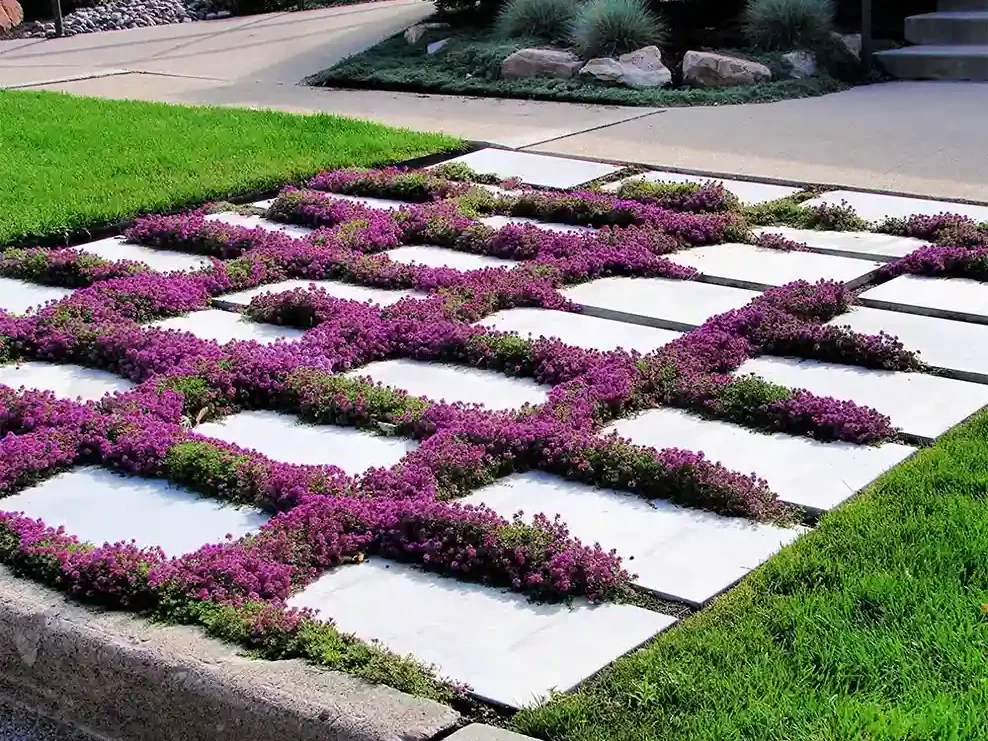


Final Thoughts
Incorporating creeping thyme into your garden is more than just an aesthetic choice; it’s a commitment to a sustainable and vibrant landscape. This resilient ground cover offers a tapestry of colorful blooms, a fragrant aroma, and a natural allure for pollinators, all while demanding minimal upkeep. Whether you’re aiming to replace a traditional lawn, accentuate pathways, or introduce a drought-tolerant plant, creeping thyme stands out as a versatile and eco-friendly option. By understanding its varieties, propagation techniques, and care requirements, you can cultivate a garden that is not only visually captivating but also harmonious with nature. Embrace the charm of creeping thyme and let your garden flourish with its enduring beauty.

